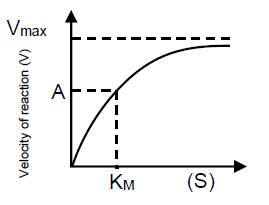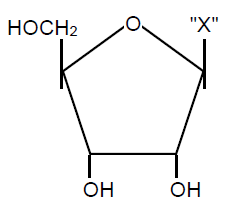The two polynucleotide chains in DNA are
1. parallel
2. discontinuous
3. antiparallel
4. semi - conservative
1. parallel
2. discontinuous
3. antiparallel
4. semi - conservative

To unlock all the explanations of 38 chapters you need to be enrolled in MasterClass Course.

To unlock all the explanations of 38 chapters you need to be enrolled in MasterClass Course.
About 98 percent of the mass of every living organism is composed of just six elements including carbon, hydrogen, nitrogen, oxygen and
1. phosphorus and sulphur
2. sulphur and magnesium
3. magnesium and sodium
4. calcium and phosphorus

To unlock all the explanations of 38 chapters you need to be enrolled in MasterClass Course.

To unlock all the explanations of 38 chapters you need to be enrolled in MasterClass Course.
Which one of the following is not a constituent of cell membrane
1. Cholesterol
2. Glycolipids
3. Proline
4. Phospholipids
A competitive inhibitor of succinic dehydrogenase is
| 1. | malonate |
| 2. | oxaloacetate |
| 3. | α-ketoglutarate |
| 4. | malate |

To unlock all the explanations of 38 chapters you need to be enrolled in MasterClass Course.

To unlock all the explanations of 38 chapters you need to be enrolled in MasterClass Course.
Three of the following statements about enzymes are correct and one is wrong, which one is wrong
1. Most enzymes are proteins but some are lipids
2. Enzymes require optimum pH for maximal activity
3. Enzymes are denatured at high temperatures but in certain exceptional organisms they are effective even at temperatures 80°- 90°C
4. Enzymes are highly specific

To unlock all the explanations of 38 chapters you need to be enrolled in MasterClass Course.

To unlock all the explanations of 38 chapters you need to be enrolled in MasterClass Course.
In curve of enzyme catalyzed reaction, the value of velocity of enzyme reaction at point A will be

1. and velocity may increase by increasing temperature
2. and velocity may increase by increasing substrate
3. and velocity may increase by increasing by catalyst
4. and velocity remain constant even changing any factor in to the medium.
Which one of the following enzymes carries out the initial step in the digestion of milk in humans?
1. Pepsin
2. Rennin
3. Lipase
4. Trypsin
Given below is the diagrammatic representation of one of the categories of small molecular weight organic compounds in the living tissues. Identify the category shown and the one blank component "X" in it.

Category Component
1. Cholesterol Guanine
2. Amino acid NH2
3. l Nucleotide Adenine
4. Nucleoside Uracil

To unlock all the explanations of 38 chapters you need to be enrolled in MasterClass Course.

To unlock all the explanations of 38 chapters you need to be enrolled in MasterClass Course.
Which one of the following is a non-reducing carbohydrate?
| 1. | Maltose |
| 2. | Sucrose |
| 3. | Lactose |
| 4. | Ribose 5-phosphate |
Select the option which is not correct with respect to enzyme action:
| 1. | Substrate binds with enzyme at its active site. |
| 2. | Addition of a lot of succinate does not reverse the inhibition of succinic dehydrogenase by malonate. |
| 3. | A non-competitive inhibitor binds the enzyme at a site distinct from that which binds the substrate. |
| 4. | Malonate is a competitive inhibitor of succinic dehydrogenase. |

To unlock all the explanations of 38 chapters you need to be enrolled in MasterClass Course.

To unlock all the explanations of 38 chapters you need to be enrolled in MasterClass Course.






